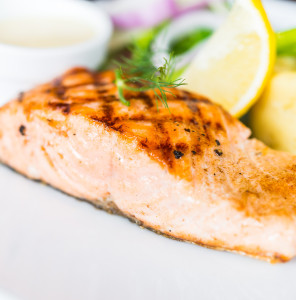
Use your search engine or explore a local bookstore, and you’ll find a wide variety of anti-inflammatory diet books. This eating approach is promoted to reduce everything from heart disease to asthma, and often requires you to make drastic changes in your eating pattern. What if you could make a few easy modifications that had a significant effect on your health?
It is helpful to understand inflammation and its effects in your body. Inflammation occurs as a protective response to injury; this is a normal immune response and part of our healing process. Unfortunately, chronic inflammation occurs when the response continues and begins damaging healthy tissues, arteries, or joints, and can result in increased risk for health issues such as insulin resistance, type 2 diabetes, arthritis, cancer, digestive disease, lupus, and cardiovascular disease. There is also current research supporting the idea that inflammation of the brain contributes to plaque buildup and memory problems, increasing the risk of Alzheimer’s disease.
Lifestyle factors that can aggravate inflammation include high blood pressure, excess weight, stress, smoking, and of course, diet. An anti-inflammatory diet, or nutrition plan, consists of whole foods high in antioxidants, dietary fiber, and beneficial fats. Here is what it should include:
-Vegetables and fruit: at least 5 palm-size servings daily in a variety of colors
-Fish: 2 servings weekly, especially salmon, tuna, sardines and mackerel
-Omega 3 fats: found in fish as well as flax seed and walnuts
-Other beneficial fats: extra virgin olive oil
-Lean protein: 2 palm-size servings daily, from meat or legumes
-Spices: turmeric, cumin, cinnamon, ginger, and coriander
-Whole grains: 100% whole wheat, oats, barley and quinoa
It is also important to reduce dietary factors that make inflammation worse. These include refined carbohydrates, added sugars, sodium, trans fats, saturated fats, processed meat, and omega 6 fats found in vegetable oils, salad dressings and processed foods.
So, about those few easy changes I mentioned earlier.
-Switch your afternoon snack from chips or pretzels to a variety of raw vegetable slices, such as broccoli, peppers, and cucumbers
-Add fruit to your oatmeal instead of sugar, to your salad instead of croutons, and to your dessert menu
-Grill or bake a large enough piece of fish to have leftovers the next day
-Cook fish with onions and garlic, topped with a variety of spices and olive oil
-Switch to home-cooked instant brown rice instead of a boxed rice or noodle mix
-Try a crockpot dinner of quinoa, chicken and vegetables
-Buy canned beans (rinse off the sodium) to take the place of meat once a week
-Make your own salad dressing with extra virgin olive oil, lemon juice, and garlic
Try a simple change each week and eventually you’ll be eating an anti-inflammatory diet!
Melissa Wdowik, PhD, RDN, is an assistant professor at Colorado State University in the Department of Food Science and Human Nutrition, and director of the Kendall Anderson Nutrition Center.